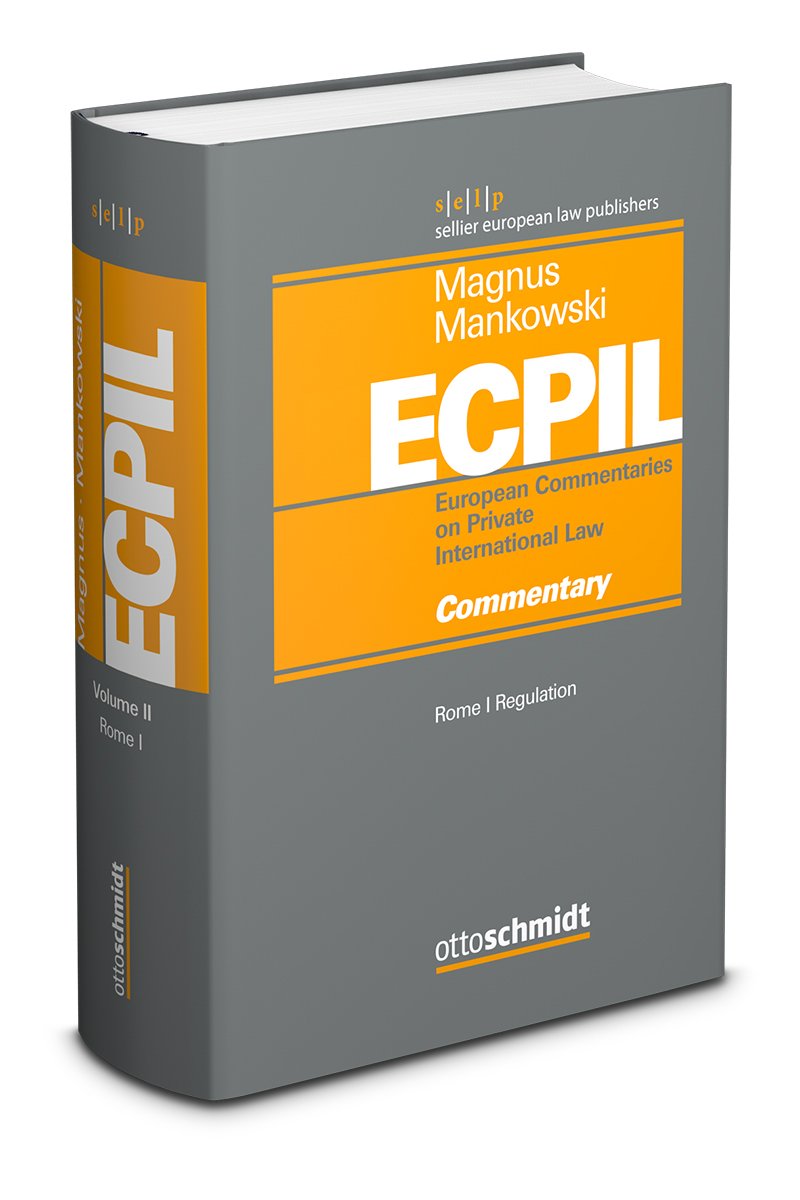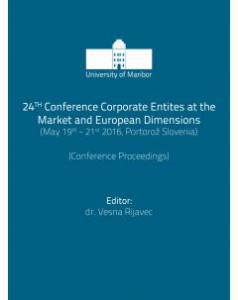This report has been prepared by Martina Mantovani, research fellow at the MPI Luxembourg.
On 1st and 2nd December 2016, the Academy of European Law (ERA) hosted, in Trier, the conference “Freezing Bank Accounts Across Europe (and Beyond)”, bringing together a wide range of academics and practitioners to discuss the new scenarios opened by the prospective implementation of the new European Account Preservation Order, which will apply from 18 January 2017.
This post provides an overview of the presentations and of the discussions on the issues raised.
LOOKING ACROSS EU BORDERS
Freezing of assets (by foreign parties) in Swiss banks – Prof. Dr. Daniel Staehelin provided valuable insights on the current situation in Switzerland. With its 276 banks, this country is still one the largest managers of offshore wealth, thus being an appealing target in the eyes of foreign creditors who seek to recover their monetary claims. Special attention was given to the procedural requirements for obtaining a Swiss freezing order and to the possible difficulties arising from the interaction with the bank secrecy regime. Pursuant to the 1889 Debt Enforcement and Bankruptcy Act, in fact, the claimant shall prove, inter alia, that the debtor is the client of a specific bank. In this respect, it is worth stressing that the relative weakening of the bank secrecy regime, brought along by the Treaties concluded by Switzerland over the last few years, solely concerns the requests coming from authorities of the contracting States for tax recovery claims. Conversely, in civil and commercial matters, banks can – and generally will – still invoke the professional secret against requests coming from private persons engaged in debt collection activities.
THE EUROPEAN ACCOUNT PRESERVATION ORDER (EAPO)
Scope and procedure for obtaining an EAPO, including jurisdiction and service of documents – In this second presentation, Prof. Pietro Franzina led us through the procedural steps set forth by the EAPO Regulation for the granting of a European freezing order. These latter play, in fact, a pivotal role in the overall architecture of the EAPO Regulation, as its “added value” vis-à-vis other European instruments (namely, the Brussels I bis and the Maintenance Regulations) lies precisely in the harmonized procedural framework established therein. In addition to some common rules on jurisdiction and on the substantive requirements for issuing a account preservation order, the Regulation sets forth specific rules governing enforcement by national courts and enforcement authorities. The remedies available to the debtor and the appellate stage of the proceedings are, as well, specifically considered by the Regulation. The underlying intent is to sidestep – at least in theory – most of the practical difficulties arising out of the interaction with domestic procedural regimes, which are thus relegated to a minor gap-filling role.
Practical issues for banks operating in the Member States – The presentation by Sarah Garvey and Joseph Delhaye identified four major operational issues for the bank required to implement the order. At the outset, the identification of the assets which can be preserved through an EAPO may prove particularly challenging in the case of joint and nominee accounts. Since, pursuant to Article 30, these accounts may be preserved only to the extent permitted under the law of the Member State of enforcement, there will be significant discrepancies in the practices followed in the several Member States. Another operational difficulty arising out of the interplay between uniform and domestic regulation consists in the determination of the exempted amounts and of the legal regime governing the bank’s potential liability. Pursuant to, respectively, Article 31 and Article 26 of the EAPO Regulation, both shall in fact be determined under the national law of the Member State of enforcement. Again, these provisions will generate significant divergences from State to State. Last but not least, completing the form provided for by Annex IV may raise practical issues which find no express answer in the Regulation (eg. the treatment of pledged accounts, finding a balance between the ex-parte nature of the order and the duty of care and prompt information generally owed by banks to their clients). In light of the above, the banks of the participating States will likely be unable to develop a uniform approach to the EAPO.
What are the risks for claimants? – The position of the claimant vis-à-vis the EAPO has been analysed by Philippe-Emmanuel Partsch and Clara Mara-Marhuenda, who identified four major risks arising in connection with an EAPO application. Firstly, the claimant has to take into account the possibility of having to provide a security, if the court considers it appropriate in the circumstances of the case. Secondly, he may be held liable for any damage caused to the debtor by the Preservation Order due to his fault. Although, generally speaking, the burden of proof shall lie with the debtor, the claimant might have to actively prove the lack of fault on his part in order to reverse the presumption set out by Article 13 (2) of the EAPO Regulation. The third risk is connected with the ranking of the EAPO: as it has the same rank as an “equivalent national order” of the State of enforcement, other domestic measure may hypothetically have priority over the European freezing order, if so provided by national law. Finally, the claimant shall consider that the defendant may challenge the EAPO (Article 33), or oppose to its enforcement (Article 34). If the defendant is successful, the EAPO can be, respectively, revoked (or modified) and terminated (or limited).
WORKSHOP: Freezing monies in bank accounts across Europe – During this workshop, participants were confronted with a comprehensive “freezing of bank account scenario” devised by Prof. Gilles Cuniberti. The analysis of the case brought to light many uncertainties relating to the practical functioning of the EAPO Regulation. The proper interpretation of some concepts used – but not defined – by the Regulation, the interplay with the Service Regulation, compliance with the time-frame set forth by the EU legislator, the standard of due diligence required of the bank were perceived by the participants as the most problematic aspects of the EAPO Regulation.
ROUND TABLE (Partsch, Delhaye, Raffelsieper, Weil): Maintaining surprise vs protecting the debtor – As of January 2017, the EAPO Regulation will provide creditors with the possibility of obtaining an ex parte freezing order easily enforceable throughout the EU. This measure evidently purports to overcome the practical limitations arising out of the case Denilauer, where the ECJ held that the respect of the rights of the defence necessarily implies the prior hearing of the defendant. In this round-table, the speakers and participants brought attention to the downside of this case-law, insofar as it undermines the effectiveness of the protection of creditors’ interests. The discussion focused on the system of procedural safeguards set in place by the EAPO Regulation. The speakers agreed on the fact that the Regulation provides for an adequate balance between the interests all the parties involved, while limiting, at the same time, the risk of procedural abuses.
WORLDWIDE FREEZING ORDERS
US freezing orders in practice: a primer – In his presentation, Brandon O’Neil provided some useful insights on the system (or, rather, on the lack thereof) governing the attachment of assets in the US. The lack of a uniform Federal approach to the matter results into a piecemeal legal framework, where attachment of assets is generally seen as an extraordinary remedy whose legal regime differs from State to State. Although several “Model laws” have been proposed over the years, the State legislatures have been strenuously reluctant to give up their restrictive and specific national regimes. As a result, obtaining a freezing order in the US may require the filing of multiple actions in several States. The speaker provided for positive examples of this legal diversification, by giving a brief account of some “domestic peculiarities” – ie Columbia’s ex parte procedure, Delaware’s business-friendly regime and Florida’s standard of the “fraudulent intents”. In the second part of the presentation, Mr. O’Neil focused on the standards and procedure set forth by the law of the State of New York.
English freezing orders: the weapon of choice for claimants? – Ms. Sarah Garvey described the substantive and procedural requirements for the granting of English freezing orders, also known as Mareva injunctions. The speaker especially focused on the duty of full and frank disclosure owed by the applicant’s solicitors, which factually ensures the adequate protection of the defendant’s interests within the framework of an ex parte procedure. Some relatively recent trends of the English practice were as well investigated, such as the possibility of combining freezing injunctions with “search orders”, in order to identify and freeze the relevant assets in one go. According to Ms. Garvey, English freezing injunctions may be an appealing alternative to the EAPO. They present, in fact, considerable “competitive advantages” over the European Instrument, namely: (i) their broader scope as to the kinds of assets covered by the measure; (ii) their potential worldwide reach; (iii) the swift and informal nature of the procedure (iv) the tough sanctions for non-compliance with the order.
ROUND TABLE (Hess, Franzina, Garvey, O’Neil): EAPO vs freezing orders – Which path to take? The discussion focused on the legal treatment reserved by the EAPO Regulation to the domiciliaries of non- Participating Member States, who cannot avail themselves of an EAPO but may nevertheless be affected by such a measure if their bank account is held in a Participating State. The concern has been voiced that the exercised of a legal prerogative of some Member States (the right of opting in/opting out) de facto results, in this case, in a discriminatory treatment of their domiciliaries, in particular when these latter apply for an EAPO as maintenance creditors. The speakers expressed diverging opinion on this point.
The concluding remarks were made by Prof. Gilles Cuniberti, who expressed cautious optimism as to the prospects of success of this new European instrument.

 This book is a collection of papers presented at the 24th traditional conference Corporate Entities at the Market and European Dimensions. The conference was organized on 19-21 May 2016 in Portoroz, Slovenija, by the Institute for Commercial Law Maribor and the Faculty of Law of the University of Maribor. It was co-financed by the European Commission within the project
This book is a collection of papers presented at the 24th traditional conference Corporate Entities at the Market and European Dimensions. The conference was organized on 19-21 May 2016 in Portoroz, Slovenija, by the Institute for Commercial Law Maribor and the Faculty of Law of the University of Maribor. It was co-financed by the European Commission within the project 